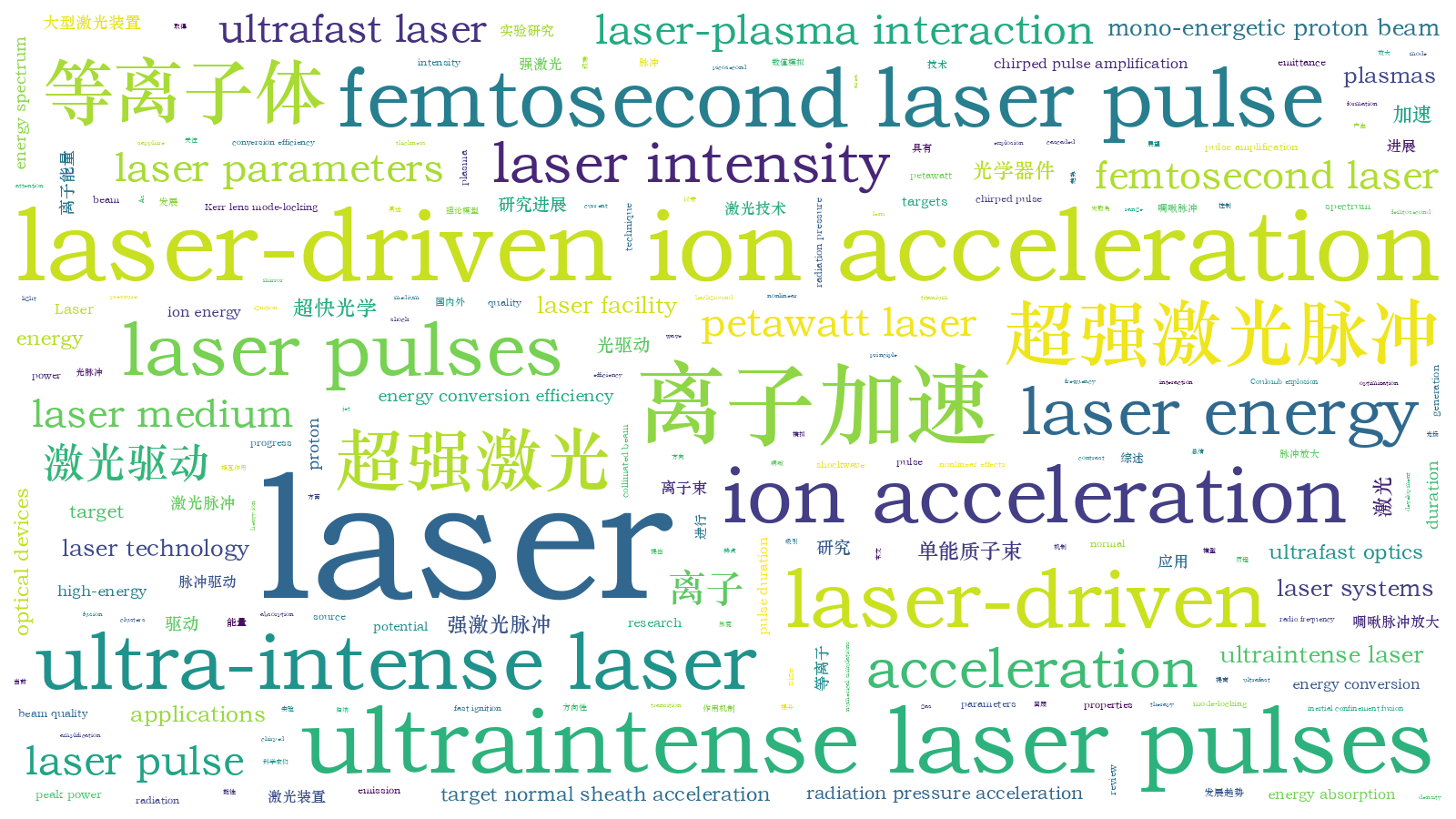激光驱动离子加速的研究进展及其重要应用综述  下载: 2477次特邀综述
下载: 2477次特邀综述
Significance Thanks to the invention of the chirped pulse amplification technique and the Kerr lens mode-locking technique as well as the discovery of the titanium: sapphire laser medium, the current laser systems can provide picosecond or femtosecond laser pulse duration and simultaneously ultrahigh peak power of terawatt to petawatt levels. Recently, the peak power of multipetawatt (as 10 PW) has already been achieved in several laboratories, such as the extreme light infrastructure-nuclear physics and Shanghai superintense ultrafast laser facility. These laboratories have prompted significant progress on laser-plasma interaction. In the past decade, laser-driven ion sources and their applications have been extensively investigated. One of the significant features of laser-driven ion beams compared with conventional ion accelerators is the sufficiently small valid source size (~10 μm) and ultrashort duration (picoseconds) at the source of the ion bunch. This is attributed to the increased acceleration gradients of the order of MeV/μm, compared with MeV/m provided by the conventional ones, e.g., the radio frequency wave-based accelerators.
Progress Since the 1990s, the research on ion acceleration driven by ultraintense laser pulses has attracted significant attention from national and international professionals. Before 2000, the ion energy of several MeV had been achieved in laser-plasma experiments using different targets, such as thick solid foils, gas jets, and submicrometric clusters. However, these ion beams with a wide energy spectrum and large emission angle are unattractive as ion accelerators for many potential applications. In 2000, high-energy proton beams with a peak energy of 58 MeV are obtained in the Lawrence Livermore National Laboratory. The protons are detected at the rear side of the target and emitted as a collimated beam along the target normal direction. Since then, scientists have proposed a new upsurge of high-quality energetic ion beams driven by relativistic laser pulses. Several groups have demonstrated, over a broad range of laser and target parameters, the generation of multi-MeV proton or ion beams with unique properties, such as low transverse emittance, ultrashort duration, high-energy conversion efficiency, and narrow energy spectrum. To improve the beam quality, scientists have proposed various ion acceleration mechanisms, such as target normal sheath acceleration (TNSA), radiation pressure acceleration (RPA), collisionless shockwave acceleration (CSA), breakout afterburner (BOA), Coulomb explosion (CE), and cascaded acceleration (CA). Among them, some have been demonstrated in experiments, while some are being or will be tested in the future petawatt laser facilities.
The laser-accelerated proton and ion beams have a duration of the order of a few picoseconds, ultrahigh cut-off energy, and a narrow emittance, making them suitable for several applications, including several unique applications. In this study, we first review the historical background of laser-driven ion acceleration, such as laser technology development and laser energy absorption mechanisms in plasmas. Second, we introduce several implemented and proposed laser-driven ion acceleration mechanisms, such as TNSA, RPA, CSA, BOA, CE, and CA, based on three aspects: theoretical models, numerical simulations, and experiments. We also compare the experimental results with theoretical predictions and simulations. Furthermore, we discuss possible ways to manipulate the proton/ion beams by tailoring the target profile and changing the laser parameters, such as the laser intensity, laser contrast, focal size and duration, target thickness, and initial density.
The third part of this review involves the potential applications of laser-driven proton or heavy ion sources. Some of them have already been established, while others are yet to be demonstrated. We analyze their promising applications in fast ignition of precompressed inertial confinement fusion fuel by laser-accelerated protons, in medical therapy, and nuclear physics. The laser-driven ion sources complement the conventional accelerators in these applications, indicating remarkable different properties.
Conclusion and Prospect Laser-driven ion acceleration is a rapidly developing research area, attractive from the fundamental science and applications perspectives. Several theoretical results, experiments, and simulations have been obtained. They contribute significantly to understand many phenomena, such as jet emission, shock formation, and flying mirror generation. As the laser ion accelerators progress, we observe that some of their applications have been successfully demonstrated, while some are being tested in experiments. Besides, with the increasing laser intensity (?1022 W/cm2) in the next years, the relativistic nonlinear effects, such as radiation reaction (RR) and pair production (PP) in the ultrarelativistic regime, become crucial. Thus, the roles of RR and PP in laser-driven ion acceleration should be investigated in detail. It will be one of the attractive topics in laser-based ion accelerators. We tend to see the transition from basic research and proof-of-principle experiments to systematic study and optimization of laser-driven ion sources through some advanced acceleration mechanisms and elaborated target designs. We believe the laser-driven ion beams will find many potential applications with high scientific, industrial, and social impacts in the near future.
胡艳婷, 张昊, 邓宏祥, 邵福球, 余同普. 激光驱动离子加速的研究进展及其重要应用综述[J]. 中国激光, 2021, 48(4): 0401006. Yanting Hu, Hao Zhang, Hongxiang Deng, Fuqiu Shao, Tongpu Yu. Review of Research Developments and Important Applications of Laser-Driven Ion Acceleration[J]. Chinese Journal of Lasers, 2021, 48(4): 0401006.







